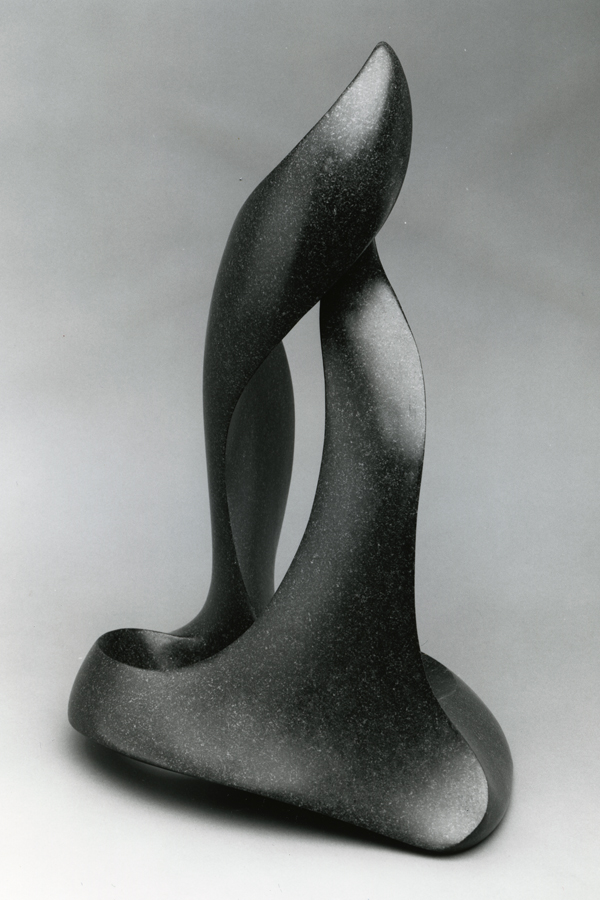We have mentioned several times how Francis Quirk was a pillar in the arts community in the Lehigh Valley and beyond. We have also marveled at his ability to draw attention to art at the Lehigh.
This post focuses on the December 1954 exhibition of Melville Stark’s paintings that also included art from Samuel Wolf and his children.
Stark’s art clearly was the draw for the show, but Samuel Wolf was active in the local arts community, although not a professional artist. In any case, we can’t help but be impressed by the crowd of 700 people turning out.
Mel Stark, born in Honesdale, Pennsylvania in 1903. He was a student of the Impressionist style of the New Hope School, finding a mentor and lifelong friend in Walter E. Baum. Stark studied painting, early on, at the University of Pennsylvania, Syracuse University and the Philadelphia Museum School before he became Baum's lead disciple in Allentown. Baum's bold and painterly, plein-air style had enormous impact and influence on Stark's artwork. Stark was considered a member of the informal group known as the Baum Circle. In 1934, he was one of four Baum students along with Joseph Gehringer, John Berninger, and Walter Mattern accepted into the Circulating Picture Club of the Philadelphia Art Alliance.
 |
| Allentown Church by Melville Stark |
In the 1930s Stark became a teacher at the Kline-Baum School. He also began to travel to the coastal town of Rockport, Massachusetts, where he rented a home every summer until his death. In Rockport, Stark studied with Anthony Thieme, one of the leading painters of the Rockport School. At one time, Stark was also considered one of the ten leading painters at the summer colony of Rockport, Massachusetts. In 1945 he joined the staff at Cedar Crest College. By the 1950s he became the director of art at Muhlenberg College, and was a founder of the Lehigh Art Alliance.
 |
| Boat Dock with Figures by Melville Stark |
Looking at Stark's work, we see some clear similarities with that of Francis Quirk. Quirk loved painting boats and seascapes. Both used lots of color and were skilled at developing accurate portrayals with detailed brush work.  |
| Bell's Fish House by Mel Stark |
 |
| Rockport Mass by Melville Stark |
Stark had become acquainted with Philip and Muriel Berman, leading collectors and philanthropists in the Allentown area. Actually, Muriel had taken one of Stark's oil painting classes at the Kline-Baum School. The Starks and Bermans socialized together, and Stark helped them in their collecting by bringing them to the studios of other Pennsylvania artists, including Redfield's at Center Bridge. The Bermans became the most significant patrons of Stark's work.
 |
| North Lehigh County by Melville Stark |
In 1956, the year of Walter Baum's death, Stark was elected the director of the Allentown Art Museum. In 1962 he was given first award for the best landscape by the National Society of Painters in Casein at the National Arts Club in New York City. Stark began to winter in Florida in 1969, still maintaining his home in Pennsylvania, after accepting a job at the Longboat Key Art Center, where he continued to paint marine scenes en plein-air. Stark died in Allentown on October 28, 1987.
Stark’s work can command prices in the $1000-$5000 range despite his not having a Wikipedia page or a strong brand image. This is a testament to the quality of his painting, as hype is not driving the valuation.
Today Stark’s paintings hang in many private collections throughout the country and at the Berman Museum at Ursinus College, where an exhibition of his works received national notice.
 |
| Mel Stark and Samuel Wolf discuss a painting with two friends |
Samuel R. Wolf was born in Nazareth, Pennsylvania and became a well-known local artist. He was a founder, president of the original board and chairman of the Circulating Picture Club at the Allentown Art Museum. Wolf was founder and a former president of the Lehigh Art Alliance and a board member of the Baum Art School.
He was also founder of the adult education department of the Upper Perkiomen School District, an art instructor for adult education in the Allentown School District, and a school authority member of the East Penn School District. Interestingly, art was not his main occupation as he maintained a full-time industrial job. He worked at Bradley Pulverizing Co., Allentown, for 43 years before retiring as treasurer in 1971.













































 Victor Riu Resurgent Harmony 1957 Photo courtesty of the Philadelphia Academy of Fine Art
Victor Riu Resurgent Harmony 1957 Photo courtesty of the Philadelphia Academy of Fine Art